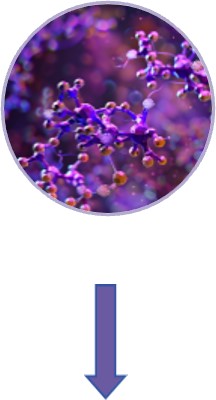- Home
- Solutions
- By Services
- Ophthalmic Disease Therapeutics Development Services
- Cell Therapy Development Service

The modification, transplantation, or stimulation of living cells to heal, replace, or reconstitute the damaged tissues fall under cell therapy. At Protheragen, we specialize in developing advanced cell therapies to combat vision loss through cutting-edge preclinical solutions.
Diseases of the eye, for example, age-related macular degeneration (AMD), retinitis pigmentosa (RP), and glaucoma are among the most important causes of vision loss and blindness globally. While drug therapy is commonplace, many often neglect the root issue of the ailment's therapeutics and initiate no action at all. Cell therapy for ophthalmic disorders involves the use of specific cells to replace damaged tissue, deliver therapeutic agents to the disease site, or enact local disease modulation. The approach showed promise in research and holds promise for the development of therapeutics for eye diseases.
 Fig.1 A variety of eye diseases that affect both segments of the eyeball. (Ahmed S., et al., 2023)
Fig.1 A variety of eye diseases that affect both segments of the eyeball. (Ahmed S., et al., 2023)The pace at which ophthalmic disease cell therapy is being developed is extremely rapid. Genetic engineering, stem cell research, and delivery technology have all underscored the possibility of effective therapeutics. Pluripotent stem cell transplantation, specifically cell transplantation, is also gaining popularity. ESCs and iPSCs both have the potential to develop into RPE cells or photoreceptors, making them able to participate in replacing cells such as in the case of RPE or photoreceptor cell replacement therapies. ECT, or Encapsulated Cell Technology, is also a novel and promising method since it enables constant delivery of therapeutic proteins like neurotrophic and anti-angiogenic factors directly to the retina.
Table 1. Summary of cell therapies for ophthalmic diseases. (Kauper K., et al., 2017)
| Therapeutics | Indications | Mechanism | Stage |
| Gene Therapy with AAV-RPE65 | Leber Congenital Amaurosis (LCA) | Replaces defective RPE65 gene in retinal pigment epithelial cells to restore visual function | Approved |
| CNTF Delivery via Encapsulated Cell Technology (ECT) | Geographic Atrophy (GA) associated with AMD | Continuous delivery of Ciliary Neurotrophic Factor (CNTF) to protect photoreceptors from degeneration | Phase III |
| iPSC-Derived RPE Cells | Age-Related Macular Degeneration (AMD) | Transplantation of induced pluripotent stem cell (iPSC)-derived retinal pigment epithelial (RPE) cells to replace damaged RPE cells | Phase I/II |
| Autologous Retinal Progenitor Cells | Retinitis Pigmentosa (RP) | Transplantation of autologous retinal progenitor cells to replace degenerating photoreceptors | Phase I/II |
| Allogeneic Stem Cell Transplantation | Glaucoma | Transplantation of allogeneic stem cells to promote retinal ganglion cell survival and optic nerve regeneration | Phase I |
Disclaimer: Protheragen focuses on providing preclinical research service. This table is for information exchange purposes only. This table is not a treatment plan recommendation. For guidance on treatment options, please visit a regular hospital.
Cell therapy development for ophthalmic diseases represents a transformative opportunity in the field of modern pharmaceuticals. At Protheragen, we are committed to advancing this field through innovative solutions and comprehensive services.

Target Identification and Validation
By means of modern genomic and proteomic tools, we identify important molecular pathways and cellular mechanisms associated with ophthalmic diseases. Selecting specific cell types and therapeutic molecules is facilitated by this process.

Cell Source Selection and Optimization
Protheragen encompasses autologous, allogeneic, and iPSC sourced cells under its diverse cell sources. Our specialists develop and implement optimally defined cell sourcing and expansion protocols to guarantee high cell viability and functionality.

In Vitro and In Vivo Efficacy Studies
With the use of cutting edge models, we evaluate the therapeutic capacity of cell-based interventions. Our in vivo research employs pertinent animal models to mimic disease states and test therapeutics.

Safety and Toxicology Assessments
Safety is fundamental in cell therapy advancement. We consider the immunogenicity studies, tumorigenicity assays, and longitudinal evaluation of therapeutic effects over time.

Protheragen also performs pharmacokinetic testing to evaluate the distribution, metabolism, and excretion of therapeutic molecules delivered by cell therapies.
Protheragen's expertise in gene therapy, cell transplantation, and encapsulated cell technology, combined with our customized approach, positions us as a leader in the development of cell therapies for ophthalmic diseases. If you are interested in our services, please feel free to contact us.
References
All of our services and products are intended for preclinical research use only and cannot be used to diagnose, treat or manage patients.